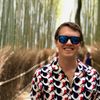This chart can tell you when it’s time to leave your job
And how to improve your role when you're no longer feeling inspired.
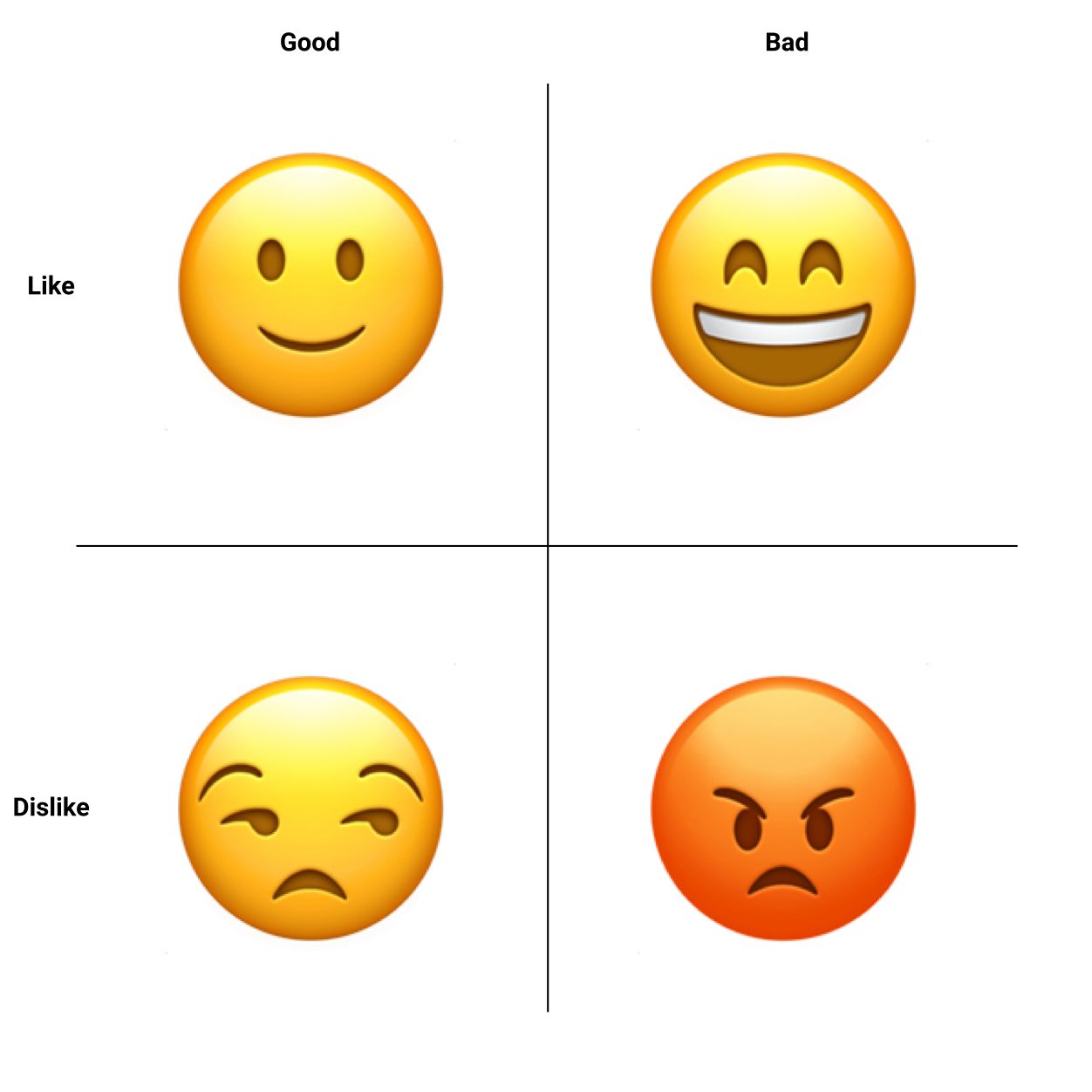
Think about the things you spend time on at work.
If you’re like almost everybody else, there are some things that you’re good at and some you’re bad at. There are also certain things you like doing and others that you don’t like.
Imagine laying out all those responsibilities on a 2x2 matrix like this:
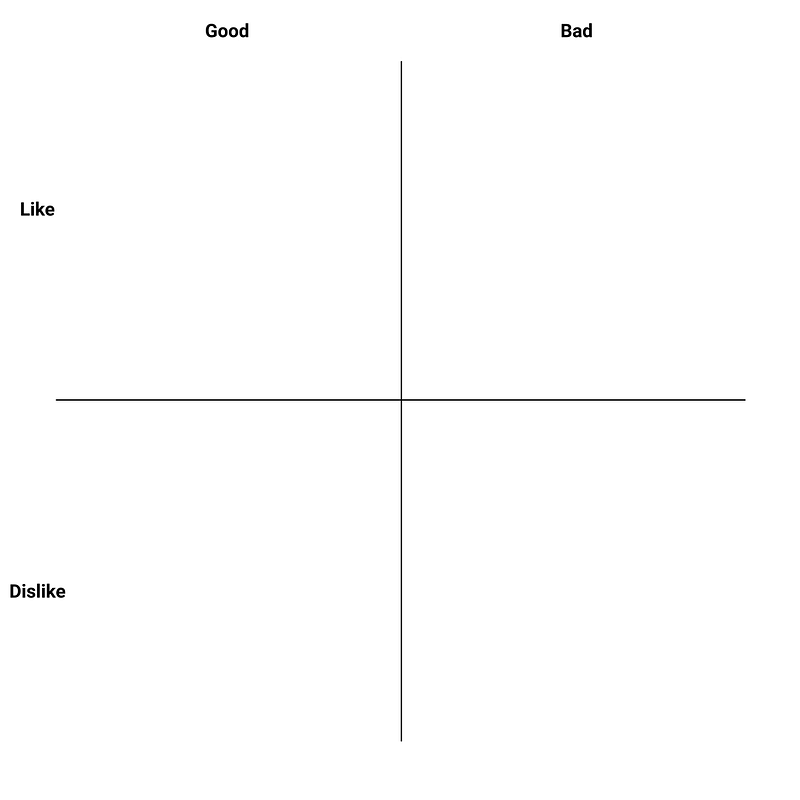
Hopefully, most would be in the upper left box. These are things you’re happy to do, since they’re both enjoyable for you and profitable for the company.
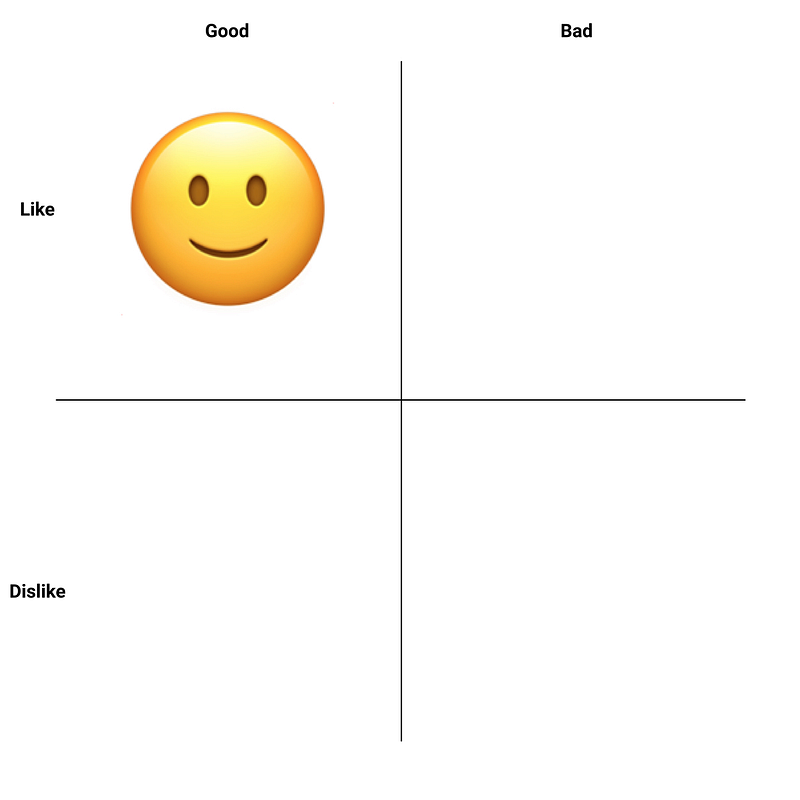
There should be almost nothing in the lower right box since those things are neither fun for you or profitable for the company.
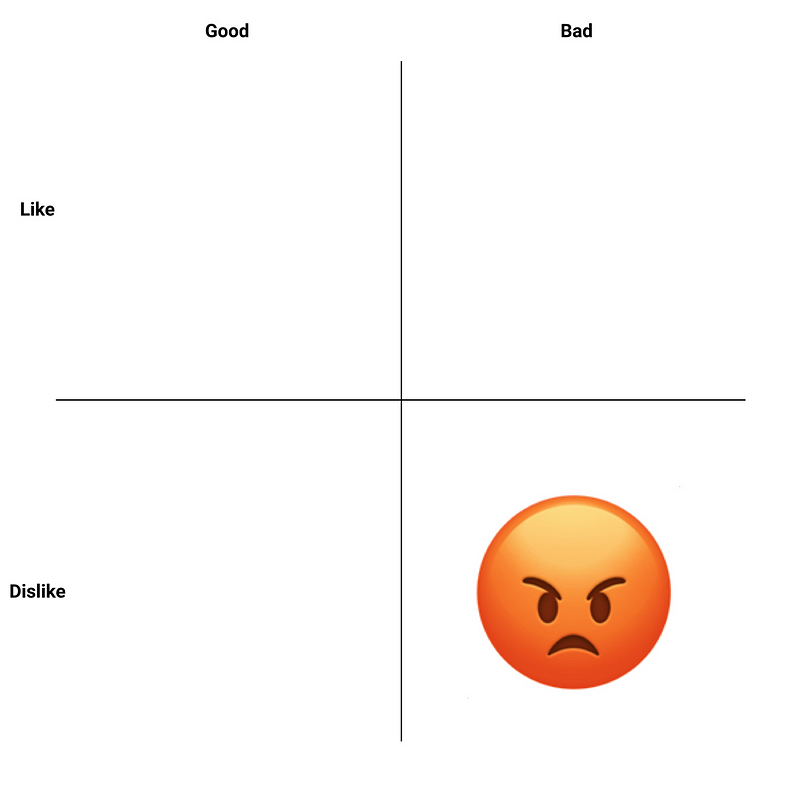
What will ultimately determine your success is how much time you spend in the other two boxes.
In the lower left box are the tasks that you’re good it, the ones you’ve perfected over time, but no longer enjoy. For salespeople, this might be cold-calling. For engineers it could be debugging. Your company assigns these tasks to you because 1.) they need to get done 2.) you can do them better and faster than anyone else. You agree to do them because you recognize that sometimes you need to “take one for the team.”

Fortunately, you get to offset them by working on things in the upper right box. What’s in there? All the exciting new stuff. The stuff you’ve always wanted to learn more about, but never had the chance to dig into. When you’re here, you’re happy. You’re dialed-in. You’re doing almost everything wrong (remember this stuff is all new to you), but that’s ok because you enjoy the work and know that you’ll get there eventually.
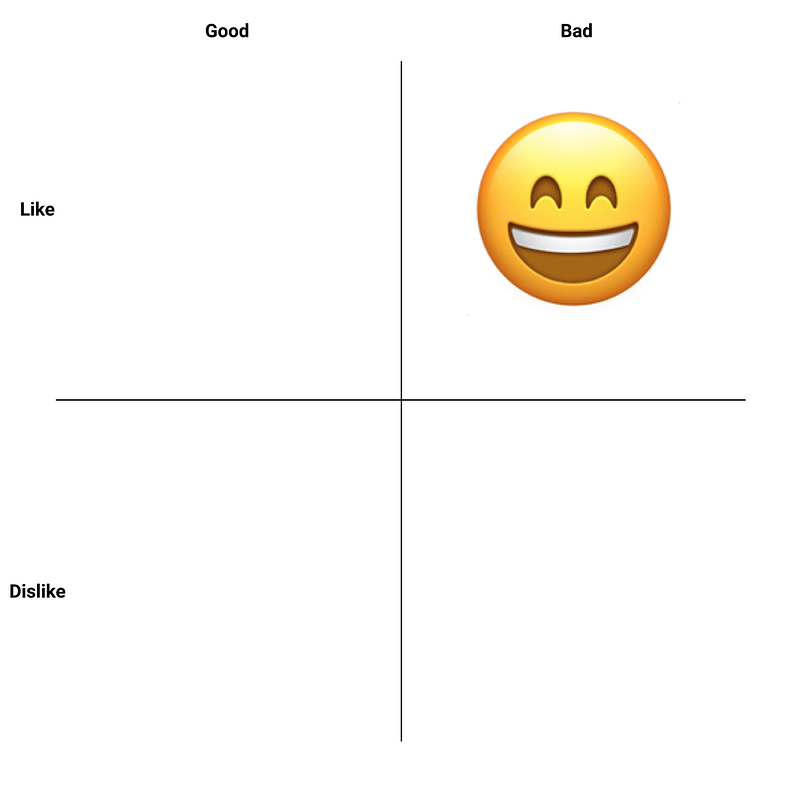
A fulfilling job will mostly consist of responsibilities in the top-left box and almost nothing in the bottom-right. It’s also fair to expect that for whatever time you spend on things in the bottom-left box, you’ll get to spend an equal amount of time in the top-right box. A good allocation might look something like this:

Of course, it doesn’t have to be 20/60/20. It could be 15/70/15 or 10/80/10. What matters is that there’s balance.
It can be tempting to try and negotiate your way into a role that looks like this:

But, if you can only do 60% of your job, it doesn’t matter how good you are at those things. You’re going to get fired.
On the other hand, if your role that looks like this…
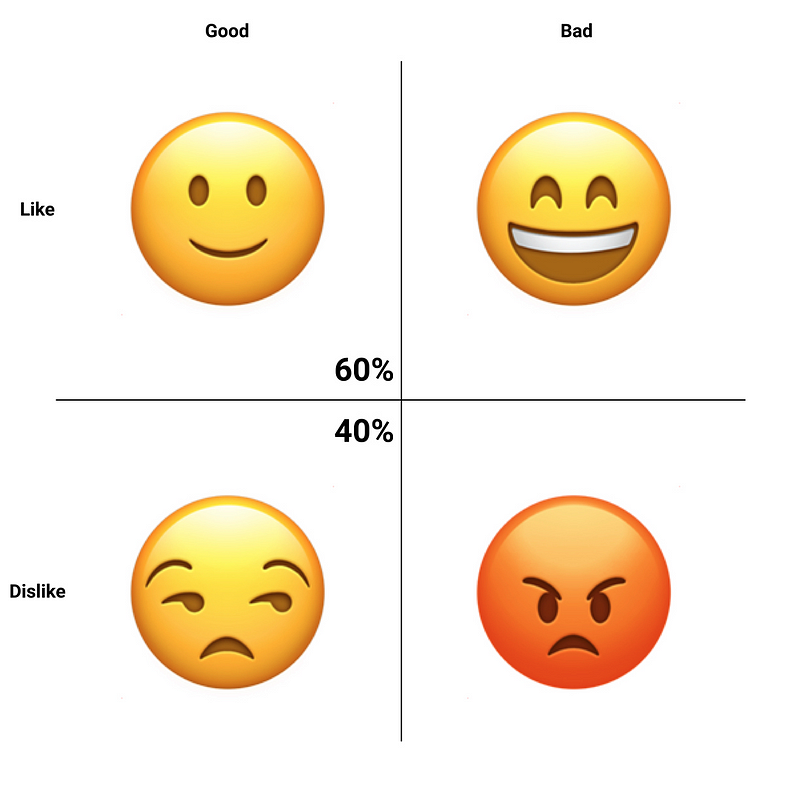
…you’ll probably end up quitting.
And more money won’t solve the problem. Because a job that looks like this will only get worse, until you quit or get fired.
That’s because things don’t stay static. As you progress in your career, opportunities will emerge. Your company will want to try content marketing and need someone who can write an ebook. They’ll start selling into China and need someone who knows Mandarin. To capitalize on these opportunities you’ll need to get good at new things.
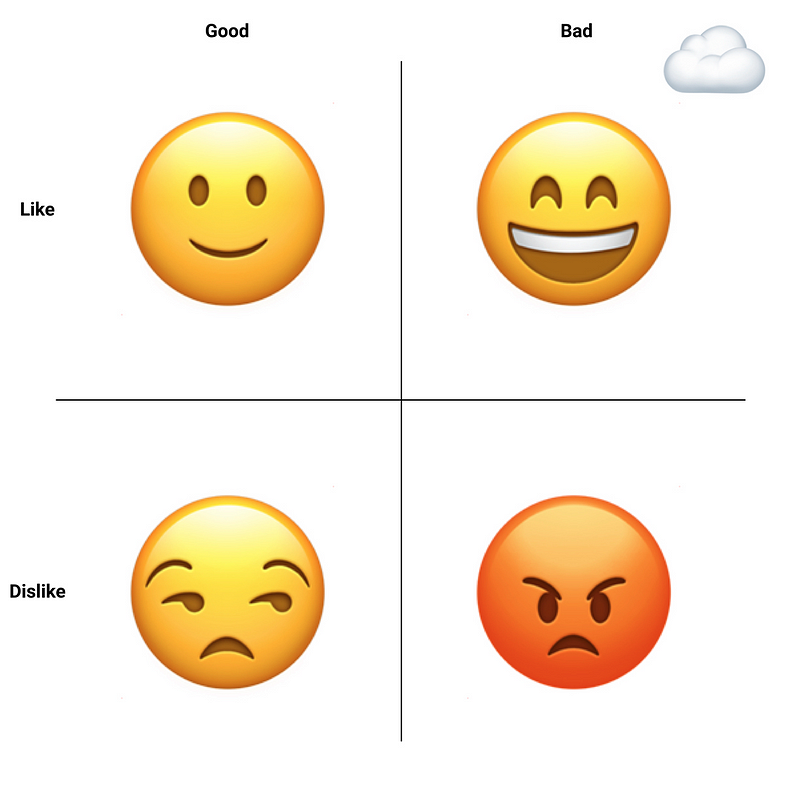
At first, you’ll suck the new things. But your excitement will motivate you to practice. With enough time they’ll shift toward the upper left box. Your company, now seeing how profitable it is to assign you these tasks, will want you to start spending more time on them. That’s when you’ll really start getting good.
Eventually though, you’re rate of learning will start to diminish, and those task you once enjoyed will turn tedious and sink into the bottom left box.
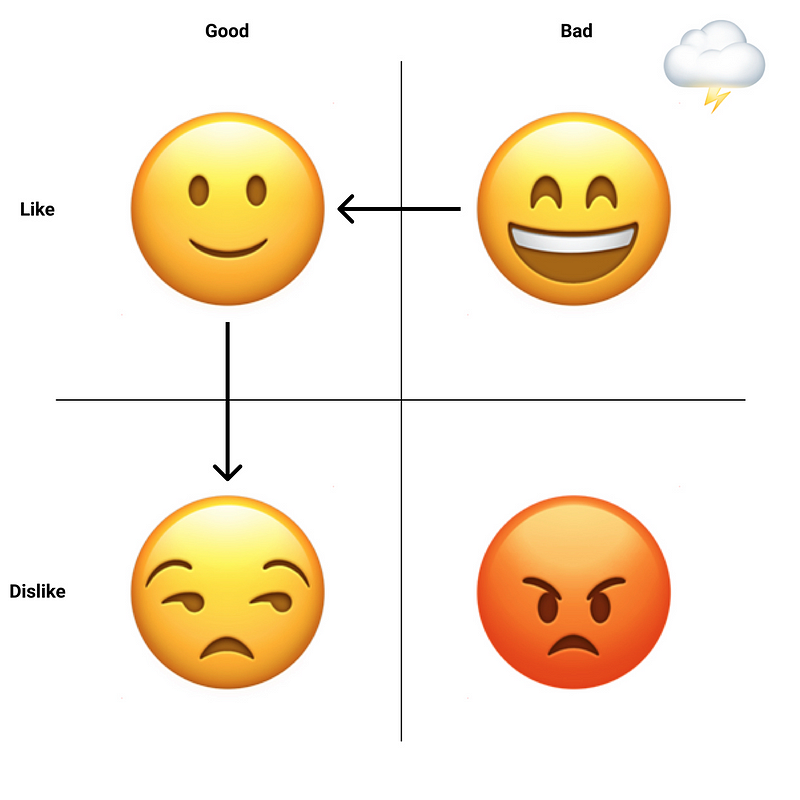
This is fine as long as they’re being replenished with new things to learn. The problem comes when the inflow of new opportunities stops. That’s because things don’t end at the bottom left box.
As your share of tasks in the bottom left box climbs above 50% you’ll start checking out. You’ll get sloppy and miss things. Like that warning sign your biggest customer is about to churn or that one clause in the contract that could screw your company. At the very least, you’ll stop paying attention to best practices, and your skills will become outdated.
Now those things you were once good at have shifted into the dreaded bottom right box.

As your performance starts to suffer, your manager will become skeptical about your trajectory and stop offering you new things, which will only make you dislike your job even more.
What to do about it
Unfortunately, if things have gotten this bad, it’s probably time to look for a new job.
With that said, there are steps you can take to prevent this from happening in the future:
- Pick good early assignments — For your first assignment try to pick something in the upper left box, since the output will be valuable for the company and the process will be exciting to you. By doing great work you’ll become valuable to your manager, which will give you the leverage to have input about what you work on next.
- Choose projects that match your learning goals — Once you’ve built some trust with your manager, make sure to lobby for some projects that line up with the role you want next. It’s okay if some are a stretch, as long as you’re providing value to the company in other ways (think back to the percentage allocations in the graphic above).
- Use spare time to level up your skill set — If the new assignments you’ve adopted feel like a considerable stretch, use your extra time to grow your skill set. If the learning doesn’t feel like a good use of free-time it may be a signal that you’re stretching in the wrong direction.
- Accept jobs with the right responsibility allocations — It can be tempting to jump ship for a company that wants to pay you more to do same thing you’ve been doing. While a higher salary and new environment may temporarily fulfill you, the feeling will eventually wear off when you find you’re not growing. Instead, look for jobs where you’ll be able to nail at least 80% of your role and 20% will be a stretch in the right direction.
Thanks to Russ Klusas for the original framework that inspired this post as well as his many helpful edits.
